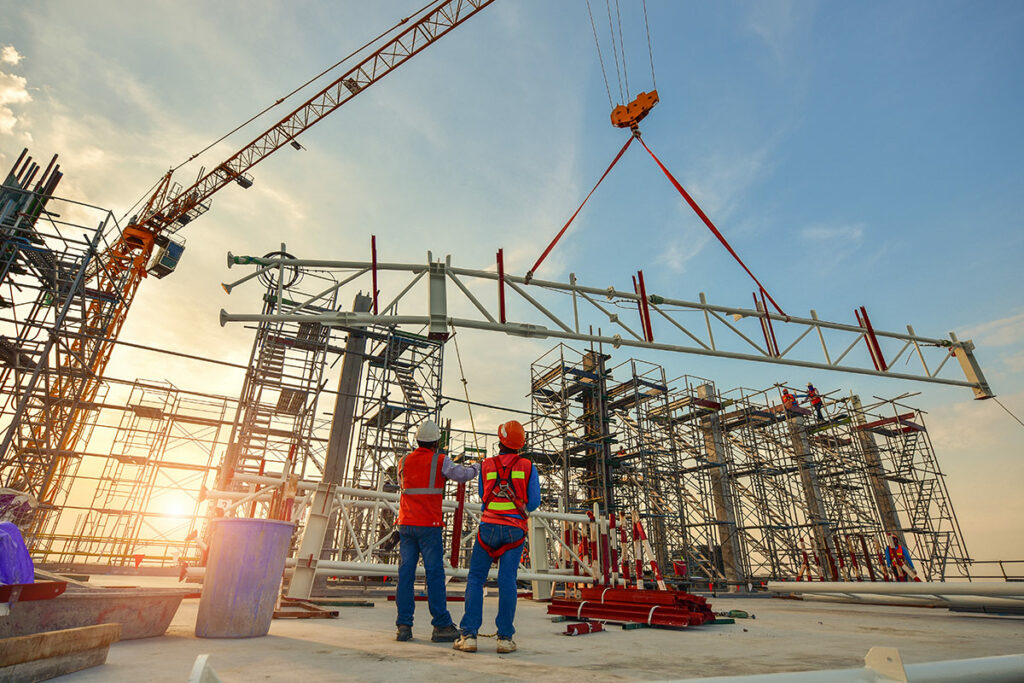Experts understand that the commercial construction industry is changing rapidly. New technologies, sustainable building practices, and changing demographics are just a few of the forces that reshape the way we build. Here are four of the most important trends shaping commercial construction today.

1. Modular And Prefabricated Construction
In recent years there has been a growing interest in modular and prefabricated construction methods. These methods involve assembling components of a building off-site in a controlled environment before shipping them to the job site for installation. This approach has several advantages over traditional construction methods.
First, modular construction is often faster and less expensive than traditional methods. Because the components are built in a factory setting, there is less need for on-site labor, which can save time and money. Second, modular construction can be more consistent and predictable than traditional methods. Components built in a factory setting can be more easily monitored for quality control. Finally, modular construction is often more sustainable than conventional methods because less waste material is generated on-site.
2. Building Information Modeling (BIM)
Building Information Modeling (BIM) is a technology transforming the construction industry. BIM is creating and using digital models to manage information about a construction project. BIM software allows architects, engineers, and contractors to collaborate more effectively by sharing information about the project in a single digital model.
BIM can result in significant cost savings for construction projects because it helps reduce errors and rework. In addition, BIM can help improve communication between all parties involved in a project, resulting in a smoother overall workflow. Finally, BIM models can be used to generate realistic visualizations of a project during the design phase, which can help to identify potential problems before they occur.
3. Sustainable Building Materials And Practices
Another trend shaping commercial construction is the increasing focus on sustainable building materials and practices. A growing number of architects and engineers are specifying sustainable products for their projects to reduce the environmental impact of buildings. In addition, sustainable building practices such as green roofing and solar power are becoming more popular as their costs continue to decline with technological advances.
Sustainability is not only good for the environment; it is also suitable for business. More and more tenants are interested in leasing space in buildings designed with sustainability in mind. As a result, sustainable buildings often command higher rents than traditional buildings. In addition, sustainable buildings often have lower operating costs due to their improved energy efficiency. Overall, sustainable building practices represent a significant opportunity for those involved in commercial construction to save money while also doing good for the environment.
4. The Rise Of The Millennial Contractor
Finally, another important trend shaping commercial construction is the rise of the millennial contractor. In recent years, there has been an influx of young people entering the workforce who are interested in starting their businesses. These so-called “millennial contractors” bring new ideas about how business should be done. For example, many millennial contractors focus on sustainability, social responsibility, and work/life balance.
In addition, millennial contractors often utilize new technologies such as drones and 3D printing to gain a competitive edge. What all these trends have in common is an emphasis on innovation. As the commercial construction industry continues to evolve, those who embrace new ideas and technologies will be best positioned for success.
Why Is It Important to Stay Up-To-Date With Commercial Construction Trends?
It is essential to stay up-to-date with commercial construction trends for several reasons. First, by understanding the latest trends, you can be sure that your project uses the most up-to-date methods and materials. This can help improve your project’s quality while reducing its overall cost.
In addition, staying current with commercial construction trends can help you to win new business. If you can demonstrate to potential clients that you are aware of the latest industry trends and are using them on your projects, they will be more likely to hire you for their next project. Finally, keeping up with commercial construction trends can make your job more enjoyable. After all, working on a project with cutting-edge technology and innovation is always more enjoyable.
How To Stay Up-To-Date With Commercial Construction Trends
There are several ways that you can stay up-to-date with commercial construction trends. First, consider subscribing to one or more industry publications. This could include magazines such as “Builder” or “Engineering News-Record.” In addition, many online resources can keep you up-to-date on the latest industry news. One such resource is Construction Dive, which provides concise, daily coverage of the commercial construction industry.
Conclusion
The commercial construction industry is undergoing a period of change. Several factors, such as the increasing use of technology and the rise of the millennial contractor, are shaping how commercial construction projects are designed and executed. Adapting to these changes will be best positioned for success in the coming years.




